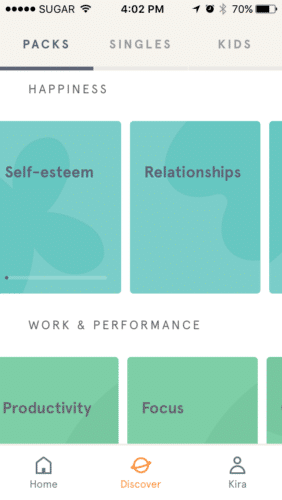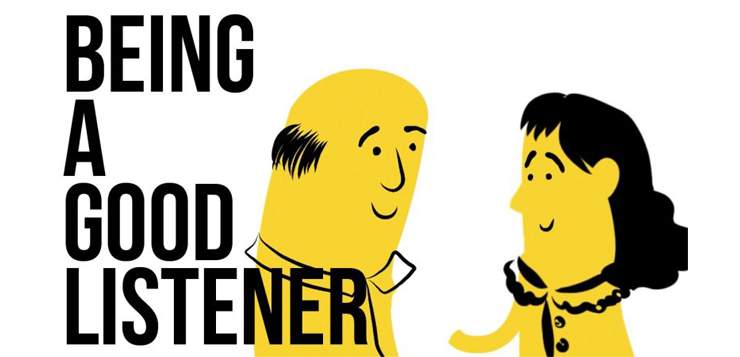Four years ago, I was a diligent Headspace user. Stressed and contemplating a career change, I turned to the popular meditation app for peace of mind and relief from worries about the future.
But after about a year, I quit. My meditation sessions didn’t bring me the sense of stillness I craved; vaguely, I wondered if I was doing it wrong but didn’t know what to change. Headspace sent me automated emails lamenting my lapsed subscription, and I ignored them.
I wondered if I was doing it wrong but didn’t know what to change.
This year, though, I decided to give it another go—and something felt a little different.
Meditation made simple?
Since its launch in 2012, Headspace has grown to become one of the most popular meditation apps on the market, boasting that more than 18 million users have downloaded it. Google and LinkedIn offer subscriptions to their employees, and jittery passengers on United, Delta, and British Airways can “get some Headspace,” too. The company recently raised funding of $37 million to further its mission of spreading health and happiness around the globe. (At the beginning of 2017, a Forbes article estimated that the company is valued at more than $250 million.)
What’s the winning formula? The gateway to Headspace is a free program called Take10, a series of 10 10-minute meditations narrated (as all the meditations are) by Headspace cofounder Andy Puddicombe, a former Buddhist monk. Although I’d completed Take10 long ago, I decided to start over. Hearing Puddicombe’s slightly-sleepy voice was like greeting an old friend.
Each meditation in Take10 follows a similar pattern: settling and tuning into your surroundings, performing a body scan, and mindfully counting breaths. These meditations feature much more guidance than silence, which may be a blessing or a curse depending on your preferences and experience. (I, to my surprise, found that slightly frustrating.)
After 10 days, it’s decision time: to subscribe or not to subscribe? Headspace will cost you as much as $12.99 per month—but once you pay, hundreds of hours of new meditations are unlocked.
New subscribers often start with Basics 2 and Basics 3—10 days each of 15-minute and 20-minute meditations, in a similar style to Take10 but with more silence. But you can also try out other series—from Stress to Depression, Self-Esteem to Productivity—or one-off meditations for activities like flying, eating, or commuting. For most sessions, you can customize the length depending on how much time you have—from 10 to 20 minutes for series, or three to 10 minutes for one-offs.

Ultimately, Headspace does look like they’re trying to provide value to meditators (and retain their subscribers) over the long term. The app offers a lifetime membership for $399.99, and promises to add a new series each month. As you become more advanced in meditation and comfortable without guidance, you can turn to “Headspace Pro” sessions that include more silence as well as more complex techniques (the program ends with a series on identity, looking at our rigid sense of self and separateness from others).
No magic bullet
Unlike some other meditation apps, Headspace offers not just meditation practice but theory as well. At the beginning and end of each session, Andy (as you’ll soon start to think of him) spends as long as two minutes explaining techniques, common pitfalls, and suggestions for incorporating mindfulness into your daily life.
One notion you’ll encounter time and time again in these “mini talks”—and perhaps the reason why I gave up before—is that whatever we’re striving for is already within us. Puddicombe repeatedly likens the mind to the sky: Sometimes it’s obscured by storm clouds, but (as air travelers know) the clear blue sky—our sense of calm and serenity—is always there somewhere. “What we’re looking for is already here,” Puddicombe says.
Really?
If you come to Headspace (or mindfulness in general) hoping to get rid of something—stress, self-doubt, pain—you might be disappointed, as I was at first. Headspace’s Anxiety series, for example, is “about changing our relationship with anxiety,” Puddicombe says. “It’s not about trying to get rid of anxiety. There’s no way that we can get rid of anxiety. Anxiety is part of being human.” The Acceptance series teaches that acceptance is an innate quality of mind—what you’re looking for is already inside you; the practice of acceptance is about noticing resistance. Athletes who tune in to the Focus series don’t learn to cultivate focus but instead to observe distractions, allowing their natural focus to emerge.
Even though Headspace’s cute animations all smile peacefully while meditating, I’m trying to remind myself that that’s not the goal or the reality.
These notions exist in tension to the motivations many of us bring to meditation. In its marketing, Headspace lauds the impact that meditation can have on our productivity and well-being—and their research page lists published papers and research studies using the app suggesting these benefits may be real, particularly for reducing mind-wandering and boosting compassion and positive emotions. But the practice of cultivating qualities like focus, acceptance, or self-esteem can feel unsatisfyingly simple: learning to sit and observe the mind with a little distance, over and over and over and over.
Like mindfulness in general, Headspace offers no magic bullets or magical mantras. It isn’t as relentlessly chipper as other meditation apps out there, and you won’t find any guided relaxation accompanied by birdsong (as far as I know). The lack of “quick fixes” may come as a surprise to those enticed by its sleek design and celebrity endorsements, but in fact it’s refreshing: Headspace doesn’t trivialize any suffering you may bring to it.
The new-and-improved Headspace
Well-funded and supported by more than 150 employees, Headspace steadily releases new content—including (last fall) a slew of different series designed for athletes, which are also available on the Nike+ Training Club app. Now, athletes can turn to Headspace for meditations focused on motivation, competition, recovery, and more. These sessions aren’t groundbreaking: What they offer are your traditional meditation techniques, peppered with Andy’s insights and tips for applying them to athletics.
Another new and burgeoning area for Headspace is children’s content. Launched in July 2016, the Headspace for Kids section includes five different meditations—from Calm to Sleep to Kindness—that come in different versions for kids under five, ages 6-8, and 9-12. I could imagine parents using these regularly around naptime or bedtime, and even getting some benefit themselves. The guided audio seems age-appropriate but still serious enough for the adult ear.
When contacted for comment about how the Kids content was developed—in particular, did Headspace draw on any outside sources, experts, or research to customize the meditations for different ages?—a representative would not tell us much, except to share that Puddicombe created the meditations. The representative shared a Headspace announcement stating that teachers and parents were involved in the process.
Although using mindfulness to turn a profit rankles some, it does mean that Headspace can be relied upon for continual improvements. The app went through a complete redesign recently, adding mini meditations (one to three minutes to “Breathe,” “Focus,” “Refresh,” etc.) designed for people with busy schedules. Previously, you had to stick with a series until the end or lose your progress in it; now, users have more flexibility to switch back and forth between multiple series. If you feel like trying something different, Headspace also releases a new “Everyday” meditation each day that’s available for just 24 hours.
Headspace wants to gain and retain customers—which might explain why the app is “gamified,” displaying how many days in a row you’ve meditated and how many total sessions you’ve done. (One user admitted to fast-forwarding through his meditations simply to keep his streak going).
Are all these changes for the better? In the past, Headspace defended its rigidity by challenging users to continue series that felt boring or uncomfortable, in order to practice working with these difficult feelings. “Usually we are so quick to react to boredom, that we never get the chance to sit with it, so we never get to understand it,” a now-deleted FAQ read. By changing their structure, Headspace undoubtedly satisfied many users, though perhaps at the expense of its deeper convictions.
This points to another inherent tension, which isn’t unique to Headspace or even to mindfulness apps. As a commercial enterprise, Headspace wants to gain and retain customers—which might explain why the app is “gamified,” displaying how many days in a row you’ve meditated and how many total sessions you’ve done. (One user admitted to fast-forwarding through his meditations simply to keep his streak going). But some of those best business practices may run counter to the underlying philosophy of the practice—in this case, the goal-less nature of meditation.
For my second Headspace journey, you could say that I’ve lowered my expectations. I’ve taken to heart Andy’s insistence to be realistic. “Know that this is a longer-term move toward a sustainable sense of ease in the mind,” he says in one meditation. “This isn’t some kind of quick-fix strategy.”
Even though Headspace’s cute animations all smile peacefully while meditating, I’m trying to remind myself that that’s not the goal or the reality.
I may not be a Headspace subscriber forever—but this time, I don’t think I’m going to quit meditation.
https://www.mindful.org/free-mindfulness-apps-worthy-of-your-attention/
https://www.mindful.org/trouble-mindfulness-apps/



